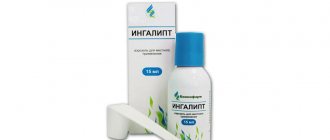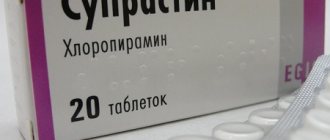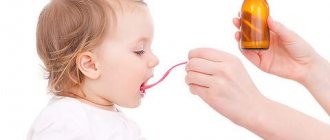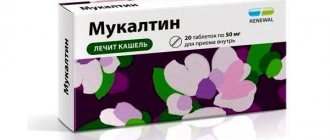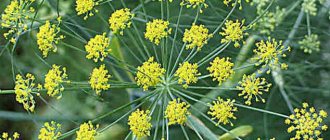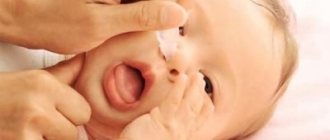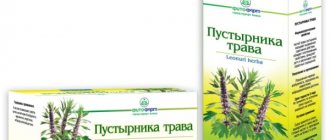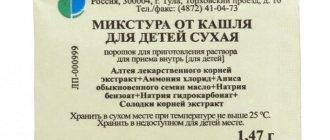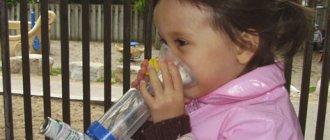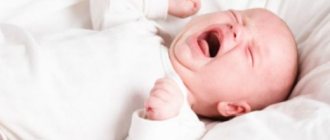What is licorice?
Smooth licorice (Glycerrhiza glabra) is a plant of the legume family with a powerful root system. The sweet root has many names: licorice root , licorice , licorice , licorice , licorice willow .
Licorice root has been used in medicine since ancient times. Chinese traditional medical practice uses licorice in the form of extracts, lozenges, syrups, decoctions, and even fresh for resorption of crushed roots.
Licorice root
Licorice root: medicinal properties and contraindications
- Liquorice is used in traditional and folk medicine to relieve coughs, allergic reactions, and as a mild laxative. Herbalists use licorice in complex powders to treat colds and relieve hemorrhoids.
- The crushed powder is used to adjust the taste of dosage forms, giving them a pleasant sweetish taste. A weak diuretic effect is used in complex diuretic preparations.
Licorice provides a healing effect on the body, thanks to a complex of active components unique to this plant.
- The anti-inflammatory effect is due to the content of glycerrisin , which has properties similar to the biologically active steroid hormone - cortisone.
- The expectorant effect is manifested by increasing the secretion of the mucous membrane of the upper respiratory tract.
- Licorice root substances have an estrogenic effect.
- The antispasmodic effect occurs due to flavone substances. They expand the lumen of the bronchi and relieve cough.
- Liquorice roots have a mild laxative effect.
- Licorice has a protective function: ingestion of the roots causes the secretion of mucus, which protects the cellular epithelium and prevents the appearance of ulcers.
Medicinal raw materials: licorice root
Along with its beneficial properties, licorice root has a number of serious contraindications.
- Taking medications with licorice can cause swelling and increased blood pressure. Patients with hypertension are prohibited from taking drugs with licorice root.
- Glycyrrhizic acid found in licorice root disrupts the electrolyte balance in the body. There is a leaching of K, which is necessary for the functioning of the heart muscle - the myocardium. A lack of K in the body can lead to cardiac arrhythmia.
- Taking diuretic herbs and tablets together with medications containing licorice can cause a serious disorder in the body - rhabdomyolysis . This syndrome can cause the breakdown of muscle tissue, increase myoglobin (a skeletal muscle protein), and lead to kidney failure.
- Long-term use of licorice drugs can cause a decrease in testosterone levels.
Cough licorice for children
Colds are very common among children.
Cough is the most common companion of such diseases. To treat this unpleasant symptom, mothers choose syrups. They are easy to use, tasty, which kids really like. Not only taste and ease of use influence mothers’ decisions about how to relieve a cough. Parents often use syrups of plant or synthetic origin for treatment.
Among herbal preparations, licorice for coughs for children is now very common.
Some interesting facts from the history of licorice root
In China, for a long time, licorice was a delicacy for adults and children; only several thousand years later, the plant entered the ranks of traditional medicine of Chinese civilization.
- The Greeks also used licorice as a delicacy, which was sold well by merchants.
- Until the beginning of the Middle Ages, wild plants were used. Only from the middle of the centuries licorice was cultivated and began to be purposefully grown. It was at this time that it became firmly established in medicine.
- Since the mid-twentieth century, the root has been actively used to treat coughs and colds.
- The effectiveness of licorice root is recognized by national government health authorities.
Medicinal properties of licorice root
The main active ingredient of the drug is licorice root. The plant also goes by other names - licorice or yellow root. Grows in Siberia and the Caucasus. The medicine is presented in the form of a thick extract or syrup.
The following components complement the small composition of this drug:
- alcohol (be sure to take this into account when treating infants);
- sugar (helps make the syrup sweet, which children really like.
Licorice for children acts against coughs in the following way: the main active ingredient stimulates the respiratory system, helping to remove phlegm from the body. Licorice can be used for any type of cough. Every parent should know how to drink licorice for a cough and what effect it has on the body.
The effectiveness of licorice against cough is due to the following substances it contains:
- glycyrrhizic acid;
- flavone glycosides;
- essential oils;
- polysaccharides;
- glycyrrhizin.
Thanks to the complex effect of these active ingredients, the muscles of the bronchi relax, which makes it possible to liquefy mucus formations and more easily remove them from the lungs. In addition to its main effect, cough licorice has many other positive effects on the body for children:
- strengthens the immune system and the body;
- has antimicrobial, anti-inflammatory effects;
- accelerates the process of regeneration of mucous membranes after illness;
- relieves swelling and swelling;
- lowers cholesterol.
Also, keep in mind that licorice has a diuretic and laxative effect, so don’t worry if you notice your child going to the toilet frequently.
For what cough should I take it?
Licorice for children is taken for any type of cough - both dry and wet. It is very effective in both cases. When dry, it helps to relax the muscles of the bronchi and thin it, when wet, it thins and removes phlegm. The syrup effectively fights both ordinary sputum and very viscous or even purulent ones.
Licorice for coughs for children is prescribed for the following diseases:
- bronchitis;
- laryngitis;
- pneumonia;
- tracheitis.
Of course, the medicine is very effective for acute respiratory viral infections, acute respiratory infections and other colds.
Instructions for use of licorice
The standard course of treatment is 10 days, but the doctor, if necessary, can extend or reduce it. How to drink licorice for cough for children?
- Children under 2 years old: 1-2 drops of syrup mixed with one tablespoon of drinking water.
- Children from 2 to 12 years old: half a teaspoon. medications diluted with water (0.25 ml).
- Children aged 12 years and older: 1 teaspoon. syrup is dissolved in the same amount of water.
You may also be interested in the fact that licorice is used to treat coughs in adults.
Contraindications
Like other medications, licorice root syrup also has a number of contraindications and should not be taken in the following cases:
- diabetes;
- hypertension;
- gastrointestinal diseases;
- liver pathologies;
- pregnancy;
- lactation period.
Possible side effects
If the rules for taking licorice for cough are not followed, the medicine can cause an overdose in the form of the following symptoms:
- swelling;
- heartburn;
- nausea;
- weakness and dizziness;
- rashes on the skin;
- increased blood pressure.
To avoid such unpleasant consequences after taking the medicine, drink in strict accordance with the instructions or doctor's prescription.
Licorice root syrup price
The price of licorice product is not at all high, thanks to the availability of ingredients and manufacturers. Of course, in different regions of the country the price of medicine will be different, but on average it varies from 15 to 70 rubles.
Features of application
When taking other medications, you need to check their compatibility with those you want to add. Licorice root cough syrup is no exception.
If you neglect this recommendation, the most disappointing consequences can arise as a result of combining various drugs with licorice! The importance of the recommendation is based, first of all, on the fact that the medicine contains alcohol. This should also be taken into account when treating babies under 1 year of age.
If your doctor has not recommended that you give your infant licorice syrup, then you should pay attention to cough syrups for infants.
Advantages and disadvantages of the drug
Like any other medicine, licorice root syrup has its advantages and disadvantages. Let's look at each of their points separately.
Positive aspects of the drug:
The syrup consists of natural ingredients. Most manufacturers don't even add anything to it except sugar and alcohol. This definitely puts the drug at least a step above its synthetic counterparts.
Very low cost. In most pharmacies in the country you can find the drug at a cost of only 20 rubles. Of course, in rare cases the price can even reach 100 rubles, but even this amount is considered budgetary, especially since the many positive properties of the syrup more than pay for this money.
- If necessary, licorice root syrup can be easily prepared at home.
- The drug is safe for children, including infants.
- Has a positive effect on the body (strengthens the immune system, makes the body resistant to bacteria.
- Sweet pleasant taste. This property helps to give the drug to children without unnecessary difficulties.
Negative aspects of the drug:
The medicine contains alcohol. When treating infants and small children, this should definitely be taken into account. There is a possibility of allergies. But this can hardly really be considered a disadvantage, since almost anything can cause an allergic reaction. Everything depends only on the individual characteristics of the body.
If you are concerned about allergy symptoms, you can do a test before taking the drug directly orally. Take a drop of the drug and place it on the back of your wrist or on the inner crease of your elbow. If after 12-14 hours no signs of allergy appear (redness, peeling, itching, swelling, etc.
), then you can safely start taking the medicine.
- Taking the drug is prohibited during pregnancy.
- The medicine may increase your blood pressure.
- If you have diabetes mellitus, asthma and gastrointestinal diseases, you can take the medicine only after consulting your doctor.
Licorice root syrup has more positive qualities than negative ones. Of course, each case must be approached individually, but if nothing bothers you, feel free to buy this medicine instead of expensive synthetic analogues. Remember, everything a person needs in order to be healthy has already been created by nature itself!
(1 5,00 of 5) Loading...
Source: https://nasmork.net/solodka-ot-kashlya-dlya-detej/
Licorice syrup - instructions for use for adults
Licorice syrup
Licorice root syrup belongs to the over-the-counter group of expectorants. It is used for all types of bronchitis and bronchial asthma, tracheitis, cough with pneumonia and other types of cold cough.
The dosage form is a dark brown syrup, sweet taste with a characteristic odor. 100 ml of syrup contains:
- licorice root extract – 4 g
- sugar syrup - 86 g
- ethyl alcohol 96% and water up to 100 ml
The instructions for the syrup have a number of contraindications:
- intolerance to certain ingredients of the dosage form
- gastrointestinal diseases at the time of exacerbation
- pregnancy and breastfeeding
- arterial hypertension
- hypokalemia
IMPORTANT: Patients with diabetes should be aware that licorice syrup contains large amounts of sugar.
Reviews and price
Before taking syrup with licorice root extract, you should also read reviews from parents who have already given this medicine to their coughing children. In most cases, licorice root syrup receives positive feedback, noting that such a remedy is really effective in helping with coughs in children.
Among the advantages of the drug are its availability, pleasant sweet taste, and natural composition. Many mothers consider the disadvantages of licorice syrup to be the presence of alcohol and sugar in the medicine, as well as the presence of contraindications.
As for the cost of licorice syrup, domestic preparations and syrups produced in neighboring countries are inexpensive. For packaging of medicine from manufacturers such as Samaramedprom, Viola, Omsk Pharmaceutical Factory, Flora Caucasus or Borshchagovsky HF Plant, you will pay from 20 to 50 rubles.
Licorice syrup - instructions for children
Taking syrup by a child
In pediatric practice, licorice syrup is used as an expectorant with difficult sputum discharge in the complex treatment of infectious inflammatory processes of the respiratory tract. The syrup is prescribed for all types of bronchitis, tracheitis, and bronchopneumonia.
IMPORTANT: Liquorice syrup contains alcohol and sugar. This should be taken into account if the child has diabetes and a tendency to allergies. The presence of alcohol can negatively affect the baby's health if the dosage of the medicine is incorrect.
The course of treatment with syrup is determined by the doctor. If necessary, a repeat course is possible. For better sputum removal during treatment, drinking plenty of warm fluids is recommended. Licorice syrup is used after meals.
Failure to comply with the dosage may cause the child to:
- allergies
- dyspepsia
- nausea
What determines the dosage of licorice syrup for children?
No matter how strong the parents’ desire to cure their child faster, we advise you to first consult a doctor. He will determine whether it is wise to use the syrup and prescribe dosage if necessary. It depends, of course, on the age of the baby and partly on the weight. But still, it is the number of years lived that comes first.
Parents may be concerned that this drug contains ethyl alcohol. It is because of its presence that the dose is measured to a minimum. After all, if it is exceeded, you can expect not the most pleasant consequences. And the problem is not even in “childhood alcoholism,” but in the interaction of alcohol with medications that the child additionally has to take. It is now clear that it is important to measure the amount of licorice root syrup responsibly. How can we define it?
Licorice root: for what cough?
At the doctor
- Licorice root has expectorant properties for difficult secretions. Glycyrrhizin and salts of glycyrrhizic acid act on the ciliated epithelium of the bronchi, accelerating the secretory motility of the mucous membrane of the upper respiratory tract.
- Flavone glycosides relieve spasms of bronchial smooth muscles. In addition, glycyrrhizic acid exhibits anti-inflammatory effects. 7-10 days of treatment help release sputum, improve respiratory tract motility and relieve inflammation.
Medicinal properties of licorice
Ancient Chinese doctors believed that licorice root was able to prolong life and preserve youth and beauty. Products based on it significantly reduce cholesterol levels, strengthen the immune system, correct the endocrine system, tone up and act on a person as an antidepressant.
The centuries-old practice of using licorice proves its high effectiveness in the treatment of pneumonia, bronchitis, asthma, dry cough, tuberculosis and other diseases of the upper respiratory tract. This plant also has a positive effect on the gastrointestinal tract. Its consumption promotes a speedy recovery from ulcers, it helps get rid of chronic constipation, improves intestinal motility and the secretion of gastric juice.
A decoction prepared from licorice roots normalizes the functioning of the nervous system, helps in the fight against fatigue and chronic fatigue, and normalizes sleep. The plant has a positive effect on the hormonal system and increases the body's resistance to oxygen deficiency.
The medicinal properties of licorice root also include a beneficial effect on the liver and urinary system. It is recommended to take it for various kidney pathologies, pyelonephritis, urolithiasis, and inflammation of the bladder. In this case, licorice will be especially effective in combination with other herbs - knotweed, horsetail, birch buds. This plant will help restore liver function. It reduces the likelihood of developing liver cancer and cirrhosis. In addition, licorice is an excellent detoxifying agent, so it can be used for poisoning, as well as to neutralize the toxic effects of certain drugs.
Licorice can be used to solve not only internal, but also external problems. It shows good results in the fight against many skin diseases - dermatitis, eczema, fungus, allergic dermatitis, neurodermatitis, pemphigus, wounds and burns. In such cases, remedies from the plant are used for compresses and rubbing.
Licorice syrup - how to take for cough: dosages for adults and children
The dosage of the medicine depends on the age of the child
Directions for use require correct dosage of the dosage form. A single dose of syrup for adults and children of different age categories is different. As a rule, a dosing spoon is included in the medicine package for convenient measuring of the medicine.
Doses for adults:
1 dessert spoon (10 ml) is dissolved in 12 glasses of water. Take 3 times a day. Treatment lasts 7-10 days.
Doses for children:
- children under 2 years old - 1-2 drops of syrup diluted in a teaspoon of water, taken 3 times a day
- children from 2 to 12 years old - 12 teaspoons of syrup diluted in 14 glasses of water, taken 3 times a day
- children over 12 years old - 1 teaspoon of syrup diluted in 12 glasses of water, taken 3 times a day
IMPORTANT: Licorice syrup is prescribed to children after 12 months.
How to use, drink
The syrup should be used no more than 4 times a day after meals. After use, drink plenty of water. The drug should be used with caution in small children, taking into account the dosage. When prescribing the drug, the doctor must take into account the patient’s well-being, as well as the severity of the disease.
The causes of night cough in a child are indicated in the description of this article.
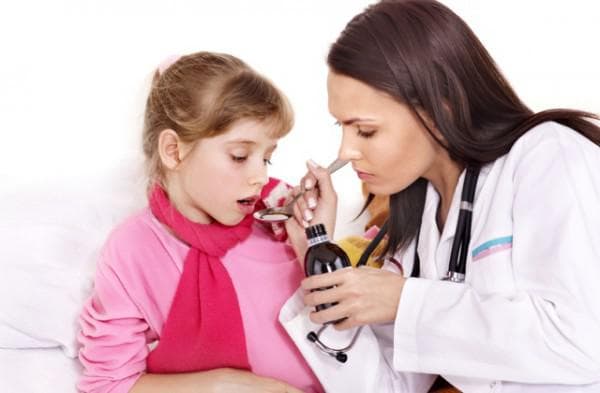
At what age can you start treatment?
Many parents ask the question at what age can cough be treated with licorice syrup, as well as how much to give. Doctors allow treatment of colds that cause coughing for children aged 2–3 years . This drug is completely safe for health and also successfully treats diseases of the upper respiratory tract. For this reason, all pediatricians actively prescribe licorice syrup.
What nebulizer medications are most often used for dry cough are indicated in the article.
Syrup regimen for children of different ages
When treating a cough, it is very important to strictly follow the dosage, which is specific to the patient’s age. So, the syrup should be taken as follows:
- For patients under 2 years of age, use the medicine only as prescribed by a doctor; just 2 drops per 10 g of water is enough.
- Children 2-12 years old - a dessert spoon dissolved in 200 ml of cold water.
- For patients over 12 years old – a dessert spoon per ¼ cup.
To facilitate the release of sputum, the drug should be taken with plenty of water. The therapeutic course is 10 days, but no more, otherwise you may experience side effects.
A child has an allergic cough; you can find out what to do and how to stop it from the article.
Lymph cleansing with licorice and enterosgel: reviews from doctors
Lymph cleansing with licorice and Enterosgel
- Healthy lymph flow is important for normal body function. Removing toxins that accumulate as a result of the activity of fungi, bacteria, and the use of drugs is a necessary process that affects human health.
- The accumulation of poisons in the intercellular fluid with insufficient lymph outflow leads to serious diseases. Immunity depends on the work of lymph, and as a result, susceptibility to a particular disease.
- Recently, many publications have appeared on how to cleanse the lymph with the help of licorice root and the enterosorbing drug Enterosgel .
- The mechanism of cleansing the lymphatic system works as follows: licorice activates lymph flow and reduces the viscosity of lymph, and Enterosgel adsorbs toxins and removes them from the body.
- A tablespoon of crushed licorice is steamed with 250 ml of boiling water.
- The infusion is prepared in a steam bath for 30 minutes over low heat.
- The resulting decoction is cooled, filtered and topped up with water to the 250 ml mark.
- Drink 5 tablespoons of the infusion five times a day, alternating with doses. Enterosgel: 1 tablespoon of gel or paste is taken half an hour after the decoction.
- It is recommended to take food no earlier than an hour after taking Enterosgel.
Licorice decoction
14 days is the optimal course for cleansing the lymph. Contraindications for treatment are:
- children's age category
- pregnancy and breastfeeding
- chronic heart disease
IMPORTANT: Before the lymph cleansing procedure, you should definitely consult a doctor if you have a history of chronic diseases.
Reviews from doctors on cleansing the lymphatic system are ambiguous, but have a number of general recommendations:
- The lymphatic system is very important for humans and requires cleansing. Lymph is a natural filter for binding accumulated toxins.
- The lymph flow should be cleaned after antibiotic therapy and intensive courses of medications, food and chemical poisoning.
- Before cleansing the lymphatic system, you should consult a doctor and outline an action plan with him.
- You should adjust your diet and water regime: small portions of food 5-6 times a day and drinking 1.5-2 liters of clean water daily.
- A few weeks before the cleanse, you should prepare your liver to remove toxins. The use of Milk Thistle, Allochol and other choleretic agents will help activate the liver.
IMPORTANT: Chronic diseases of the kidneys, liver and bile ducts are a contraindication for lymph cleansing.
How to properly cleanse the lymphatic system with licorice, doctor’s advice, video:
Side effect
Some children who take licorice root syrup experience nausea and may have diarrhea. The drug can also cause an allergic reaction, which is manifested by itching, swelling and redness of the skin, and rash. If such signs of intolerance occur, the medicine is discontinued, replacing it with a drug with a similar effect.
Side effects may also appear if the recommended treatment period is not followed (taken for more than 10 days). If you use licorice products for a long time, it can lead to an imbalance of fluids and electrolytes in the body, which will cause swelling and increase blood pressure.
The same side effect is noted when combining licorice root syrup with diuretics, cardiac glycosides, laxatives and some other groups of drugs. It is very dangerous to take such syrup together with antitussive medications that can suppress the cough reflex.
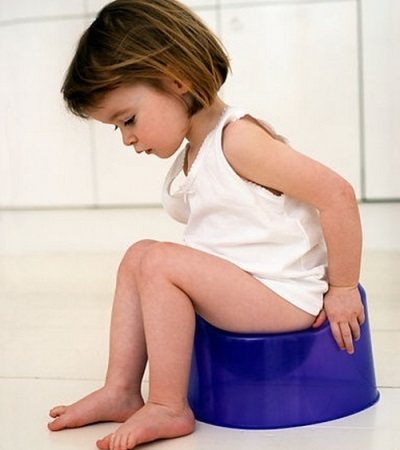
Lymph cleansing with licorice and activated carbon: reviews
Activated carbon adsorbs toxins
Activated carbon is an excellent adsorbent that can be found on the counter of every pharmacy. It can also be used in lymph cleansing techniques along with licorice root.
- Dilute a tablespoon of licorice syrup in 200 ml of hot water and drink it in the morning on an empty stomach.
- After an hour, you should take activated carbon in the dosage: 1 tablet (0.25 g) per 10 kg of body weight. You can also use other sorbents: Sorbex , Enterosgel , Polysorb , Polyphepan , Entegnin , Filtrum-STI .
- After 1.5-2 hours, you should have breakfast with porridge from any cereal.
IMPORTANT: The adsorbent medicine must be taken with at least one glass of water.
The course of treatment is two weeks.
Many opinions and assessments of this method of cleansing lymph have appeared on the Internet. Let's formulate the most common reviews.
- At the beginning of treatment, many note signs of exacerbations of many diseases: nasal discharge, allergic rashes, swelling, lacrimation.
- After a course of lymph cleansing, the following is observed: improvement in complexion, chronic cough and runny nose disappear, skin rashes and other allergic manifestations disappear. In general, there is an improvement in health status.
Methods of application
The medicine is taken orally after meals, but before giving it to your child to drink, you should find out how to dilute this medicine. To dilute the syrup, children need to take boiled water at room temperature. In addition, the bottle should be shaken before measuring the required dose of syrup. If the drug is measured in drops, they are dripped into a spoon with water.
- Children aged 1-2 years are given 1 or 2 drops of syrup per dose.
- For children over 2 years old, the required amount of medicine is diluted in a tablespoon or a quarter glass of water.
- At the age of 2 to 6 years, the dose of the drug can vary from 2 to 10 drops, for example, a 4-year-old child can be given 5 drops of syrup per dose.
- For children over 7 years of age and up to 12 years of age, it is recommended to dilute 50 drops of the medicine in half a glass of water.
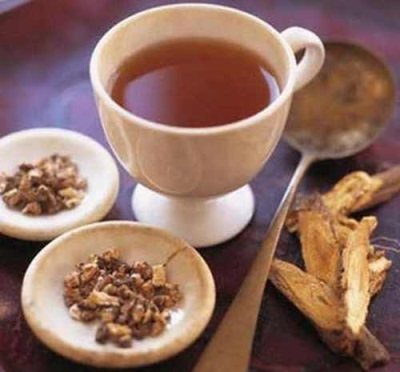
Max. A single dosage of licorice syrup depending on age is as follows:
Children under two years old
Licorice root during pregnancy
Pregnant women should not take medications without a doctor's prescription
Pregnancy is a crucial period in the life of an expectant mother. Pregnant women should not self-prescribe medication without their doctor's knowledge. Even herbal medicines can be unsafe for pregnancy and the health of the unborn baby.
IMPORTANT: Pregnant women and nursing mothers should refrain from taking medications containing licorice root in various dosage forms: decoctions, syrups, tablets, lozenges and cough drops.
Thus, the glycoside glycyrrhizin or glycyrrhizic acid contained in licorice root promotes fluid retention. And this is a risk of edema and increased blood pressure. Licorice root can increase estrogen levels and disrupt hormonal balance.
In what cases should the dosage be reduced for children?
There are several situations where you either have to reduce the dosage of licorice syrup or stop taking it altogether. This implies some contraindications, due to which licorice root becomes more harmful than beneficial. You should use this product at a minimum if:
- the child has been diagnosed with diabetes mellitus;
- inflammatory processes of the digestive organs were detected;
- pronounced allergic symptoms appear (rash, swelling, and the like);
- the baby has previously had asthma attacks or other breathing difficulties;
- there is a suspicion that the child is experiencing potassium deficiency.
Of all these contraindications, the truly serious one is an allergic reaction due to individual intolerance. In other situations, you can try giving your baby licorice root syrup if you adjust the dosage down. Starting with a few drops, gradually move on to larger doses. If the body accepts it normally, we continue to treat.
As for potassium deficiency, the risk of its occurrence is especially high if the syrup is taken for more than a week. You can protect your child from this unpleasant consequence by adding some healthy foods to his diet. Potassium is found in bananas, potatoes, grapes, and nuts. Or, finally, you can give the usual mineral complexes recommended at the “current” age. Only here, too, you need to follow the dosage, otherwise you will actually develop hypervitaminosis.
Licorice tincture - application
Preparation of licorice tincture in folk medicine
Tincture of licorice roots in alcohol is widely used in folk medicine. The range of uses of licorice alcohol extract is very wide.
- Licorice tincture is an excellent immunomodulator. The active components of the roots enhance the movement of lymph and its cleansing properties.
- Alcohol extract is a good expectorant that helps remove viscous secretions.
- The drug has an anti-inflammatory and antispasmodic effect on the smooth muscles of the bronchi, relieves coughing and relieves pain during coughing attacks.
- The tincture is used as a mild laxative for constipation.
- Used in cosmetology to cleanse and whiten the skin from age spots, relieve itching of the scalp and skin.
Making a tincture from licorice root is not at all difficult.
- A tablespoon of crushed licorice roots is poured into 75 ml of vodka.
- The tincture is tightly sealed and placed in a dark place for two weeks.
- Then filter into a dark glass bottle.
- Take 30 drops 2 times a day before meals for 10-14 days.
IMPORTANT: The tincture has the same contraindications as all dosage forms containing licorice root. Therefore, before using it, you should consult your doctor for chronic illnesses.
Compound
100 grams of syrup contains 4 grams of its main active ingredient, represented by a thick extract of licorice roots. This plant, also called licorice or yellow root, has long been used in the treatment of coughs. It is found in the European part of the country, in Siberia, and also in the Caucasus. An extract is obtained from the roots of licorice, and then various medicines are made.
It is important to note that every 100 ml of licorice root syrup includes 10 ml of 96% ethyl alcohol. This information should be taken into account when choosing a remedy for treating cough in infants. The third component of the drug is sugar syrup, which contains 86 grams in a 100-gram bottle. This composition gives the syrup a brown color, a sweet taste and a peculiar smell.
To ensure that licorice extract does not lose its medicinal properties and is stored for a long time, it is produced in dark glass bottles. Some manufacturers add preservatives, water, purified glycerin, citric acid and other substances to the drug, but the most common drugs contain only licorice, sugar and alcohol.
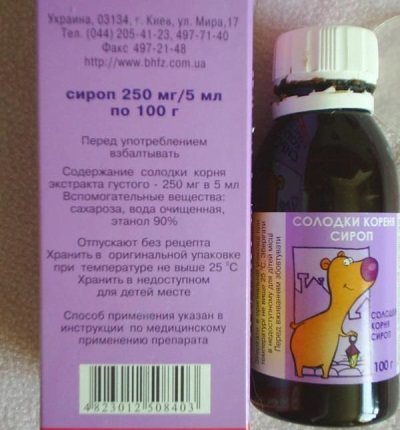
Licorice root in tablets - application
Licorice root supplement
Licorice root in the form of capsules and tablets is registered as a dietary supplement on the Russian market. The dietary supplement contains approximately 400-450 mg of licorice in one capsule, depending on the manufacturer.
The drug in capsule form is convenient to dose and take even at work, unlike liquid dosage forms of licorice.
I take licorice capsules and tablets for the following indications:
- colds accompanied by cough with difficult sputum production
- bronchial asthma and allergic manifestations
- arthritis
- diseases of the gastrointestinal tract: increased acidity, ulcerative processes of the stomach and duodenum, constipation
- eczema, neurodermatitis
- premenstrual syndrome
Capsules and tablets are taken according to the attached instructions. Usual prescription of the drug: 1-2 capsules 1-3 times a day
Is it possible to give licorice root to a baby?
Licorice root (licorice) has been known since ancient China. The “miracle cure” helped people suffering from serious illnesses get back on their feet. Even today, herbalists and traditional healers use licorice.
And in modern medicine it is considered a useful plant, the syrups from which are safe and effective for diseases of the upper respiratory tract, stomach and other ailments.
Licorice root has a regenerating property, contains 27 flavonoids, ascorbic acid, carbohydrates, essential oils, fructose, glucose, necessary for a growing body.
Is it possible to give a baby licorice root?
Licorice root has an expectorant effect , treats dry and wet coughs, and is a herbal immunostimulant. Children under one year of age should take with caution due to the alcohol content. It is recommended to mix with boiled warm water.
Syrup is a universal therapy against viral diseases. Licorice fights infections and has antipyretic properties. Liquorice is a natural product that is safe for children in a certain amount.
Benefits and harms
Organic acids, vitamins, and substances that improve antibacterial protection are a significant indicator of the benefits of licorice root. The expectorant and anti-inflammatory effect only complements the picture of the miraculous plant. But with all the positive qualities of the root, it also has contraindications, if ignored, serious harm will be caused to the body.
Firstly, a banal allergy to the elements contained in the medicinal plant. Of course, if there is one, then you can forget about licorice decoction once and for all. Its use is not recommended for diabetes, hepatitis, cirrhosis, or renal failure. A person who has problems with blood pressure will also benefit from licorice root.
A negative reaction in children when taking licorice root can be expressed in severe allergic reactions.
Licorice root has a diuretic effect . In children, frequent use affects the urinary organs. From the moment any such symptoms occur, or even suspicion of this, you should stop drinking licorice and immediately consult a doctor.
How to give correctly
Pediatrician's prescriptions must be strictly followed. Typically, licorice root syrup is taken orally 3-4 times a day after meals . In infancy, the formula should be taken into account: one drop of syrup per year of life . Therefore, for every dessert spoon of water there is a drop of syrup.
To avoid drinking alcohol, you can make your own licorice tincture. The recipe is simple. 30 g of licorice root are poured with half a liter of boiling water. Keep the decoction in a water bath for 20 minutes.
Then dilute in a ratio of 1:2, i.e. part infusion and two parts water. Store in the refrigerator for no more than two days. Give the baby a teaspoon.
Nursing mothers should take the same drink - there is no danger of alcohol getting into the milk.
